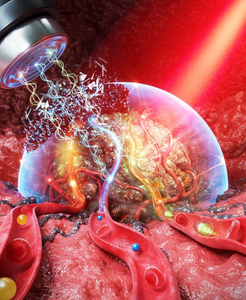A research team at POSTECH led by Professor Chulhong Kim reviews the recent advances in contrast-enhancing agents seeking to overcome the physical and practical challenges of photoacoustic imaging. Photoacoustic imaging, despite its enhanced optical contrast and ultrasonic spatiotemporal resolution, faces physical and practical limitations that make it difficult for deep tissue imaging. Contrast-enhancing agents have shown to be a promising approach to address the challenges inherent to photoacoustic imaging. The review of the latest four years of research by the POSTECH team highlights the importance of developing contrast-enhancing agents in photoacoustic imaging and provides a detailed analysis of promising strategies to overcome the challenges. The study received support from various funding sources, including the National Research Foundation of Korea (NRF) grants funded by the Ministry of Science and ICT (MSIT), the Ministry of Education, Institute of Information and Communications Technology Planning and Evaluation (IITP) grant funded by the MSIT, Korea Evaluation Institute of Industrial Technology (KEIT) grant funded by the Ministry of Trade, Industry and Energy (MOTIE), the Korea Medical Device Development Fund grant funded by the Korea government (MSIT, MOTIE, the Ministry of Health and Welfare, the Ministry of Food and Drug Safety), and BK21 FOUR program.
Advancing Photoacoustic Imaging through Contrast-Enhancing Agents
A research team from POSTECH, led by Professor Chulhong Kim, has recently featured their innovative research on contrast-enhanced photoacoustic imaging in Chemical Reviews, a highly authoritative journal. The team reviews the recent advances in contrast agents seeking to overcome the conventional physical and practical challenges of photoacoustic imaging.
Photoacoustic imaging has been investigated by the scientific community for decades as a biomedical imaging modality. Despite its enhanced optical contrast and ultrasonic spatiotemporal resolution, it faces physical limitations such as low signal-to-noise ratio (SNR), decreased image contrast due to strong optical attenuation, and lower bound on spatial resolution when imaging deep tissues. Moreover, contrast-enhanced photoacoustic imaging encounters practical hurdles such as a lack of effective cell-specific targeting due to low delivery efficiency and difficulties in developing clinically translatable agents.
To facilitate the advancement of this field, it is imperative to identify the limitations of conventional photoacoustic imaging. Contrast-enhancing agents development, which should be accompanied by high-performance image acquisition systems, is one promising approach to address the challenges inherent to photoacoustic imaging.
The research team surveys the latest four years of research into overcoming the physical and practical challenges of photoacoustic imaging with respect to SNR/contrast, spatial resolution, targeted delivery, and clinical application. They provide a detailed analysis of promising strategies for addressing each challenge, such as photoswitching agents, near-infrared-II agents, super-resolution localization agents, or micromotor agents.
The team’s review highlights the importance of developing contrast-enhancing agents in photoacoustic imaging and offers suggestions for future research directions that can potentially enable next-generation contrast-enhanced photoacoustic imaging.
Funding Sources for the Conducted Study
The study received support from various funding sources, including the National Research Foundation of Korea (NRF) grants funded by the Ministry of Science and ICT (MSIT), the Ministry of Education, Institute of Information and Communications Technology Planning and Evaluation (IITP) grant funded by the MSIT, Korea Evaluation Institute of Industrial Technology (KEIT) grant funded by the Ministry of Trade, Industry and Energy (MOTIE), the Korea Medical Device Development Fund grant funded by the Korea government (MSIT, MOTIE, the Ministry of Health and Welfare, the Ministry of Food and Drug Safety), and BK21 FOUR program. AAAS and EurekAlert! disclaim responsibility for the accuracy of news releases posted to EurekAlert! by contributing institutions or for the use of any information through the EurekAlert system.
Don’t miss interesting posts on Famousbio









